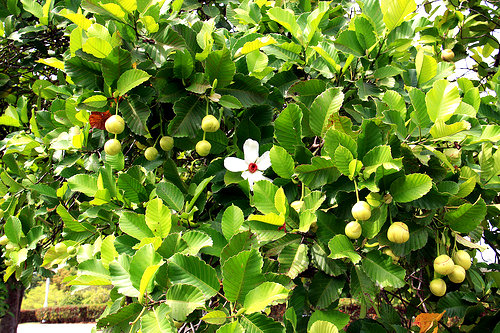INDANG, CAVITE—A group of researchers from the Cavite State University (CvSU) has looked into katmon’s phytochemical constituents and biological activities in a study.

Phytochemicals, also known as phytonutrients, are chemical compounds found in plants and are beneficial to human health.
In particular, the study aimed to isolate the bioactive component or secondary metabolite from the extracts of the leaves; elucidate the structure of the isolate; and evaluate the biochemical activities of the component.
The researchers include Agnes B. Alimboyoguen, Sally A. Roguel and Jenny Q. Mojica of CvSU Research Center.
Results of the study showed that the air-dried leaves of katmon yielded betulinic acid. Betulinic acid is known for its antiretroviral, antimalarial, and anti-inflammatory properties.
The hypoglycemic, analgesic, anti-inflammatory potential and antimicrobial properties of betulinic acid extracted from katmon leaves were also evaluated in the study.
Preliminary tests for the hypoglycemic effect of the compound in mice showed a decrease in the mice blood glucose level one hour after the compound administration.
Betulinic acid also effectively inhibited carrageenan-induced pleurisy in mice and was also found to significantly antagonize tail flick and acetic acid-induced writhing reponses in mice.
The results also demonstrated a dose- dependent response in mice which caused a significant inhibition in the abdominal constriction response when compared with the reference drug.
In addition, betulinic acid at a concentration of 30µg indicated antibacterial activity against E. coli, P. aeruginosa, S. aureus and B. subtilis. It also exhibited anti-fungal activity against C. albicans that causes inflamed skin or scalp lesions and T. mentagrophytes that causes opportunistic oral and genital infections in humans.
These significant data obtained from the current investigations revealed that katmon should be extensively studied further to determine if the promising compound is safe enough for human testing.
Dillenia philippinensis, commonly known as katmon, is a tree that belongs to the family Dilleniaceae. The species of D. philippinensis is endemic in the Philippines, common in forests at low and medium altitudes of Babuyan Islands, Luzon, Polillo, Mindoro, Masbate, Leyte, Negros, Guimaras, Cebu, and Basilan (DA, 2010).
Katmon reaches the height of 6 to 15 meters. Its bark is smooth and the leaves are leathery, shiny, rounded at the base and have a length of about 12 to 15 centimeters. The flowers are white with 15 centimeters in diameter while the fruit contains a soft, fleshy, green and edible pulp with a flavor somewhat like that of a green sour apple (Quisumbing, 1978).
Several parts of the tree including the fruits, leaves, bark and flowers have been frequently used in traditional medicine (BPI, 2010). In some areas in the country, the acidic juice of the fruit is used for the treatment of cough (Quisumbing, 1978) and for making sauces and jams as well as for flavoring fish and the fruit as vegetables. Decoction of the leaves is usually administered to treat headaches, fever, and dysentery. The juice of the flowers is sometimes used as hair cleanser while the bark of the tree has a laxative effect and anti-inflammatory activity (BPI, 2010).
The study titled A bioactive triterpene from Dillenia philippinensis (katmon) was awarded as second Best Research Paper during the National Symposium on Agriculture and Aquatic Resources Research and Development on October 28, 2014 at Elvira O. Tan Hall, PCAARRD Headquarters, Los Baños, Laguna.
Initiated by the Los Baños-based PCAARRD, the NSAARRD recognizes the outstanding contributions of individuals and organizations in uplifting the state of research and development in the country, particularly in the agriculture, aquatic, and natural resources sectors.
Recognition focuses on the research and development outputs that fuel the Council to address its task in providing science-based know-how and tools that will enable the agricultural and aquatic sectors to raise productivity to world-class standards.


Good day! Can we ask where can we purchase grafted or seeds of katmon trees ? Is it legal to sell locally? Salamat…